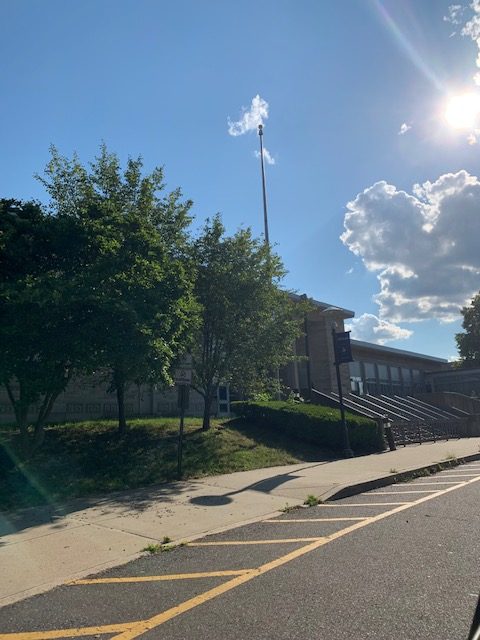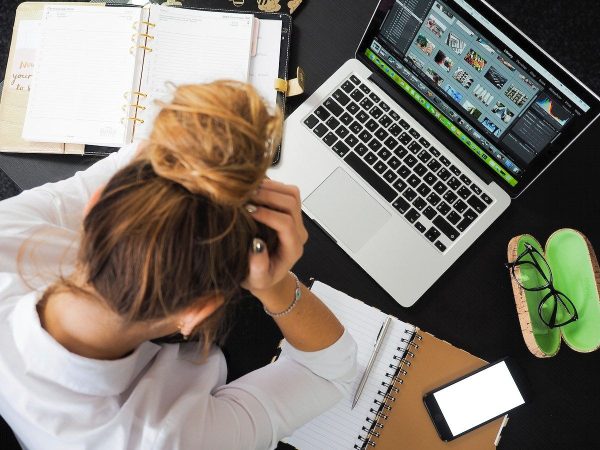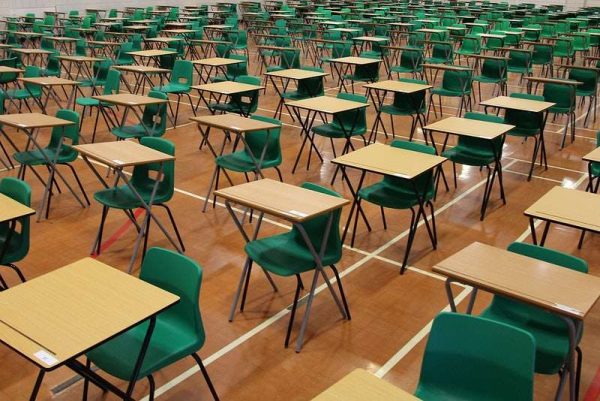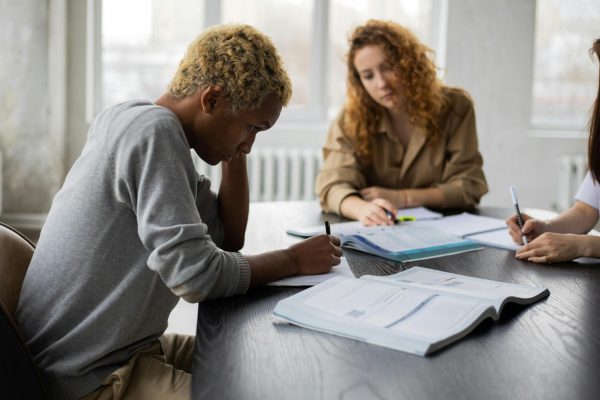Back to School: A Ludlowe Remodel
On June 29, 2020, Governor Ned Lamont and the Connecticut State Department of Education released a PDF to parents, students, and teachers in the state explaining the guidelines for the 2020-2021 school year, which give Ludlowe a new way of operating. It provides an in-depth look at the fall reopening model for schools, including classroom layouts, transportation, and future planning for blended remote learning.
The state is planning to have all students in all districts return to school in the fall for a five day week. However, schools must also have a plan for students who may temporarily choose not to return to school. There are three risk levels during the school year, which will affect capacity. If the school is in the low risk stage, in-person classes will be at 100% capacity. If the school is in the moderate risk stage, that means there is a small outbreak and there will be a reduced capacity to classes and a mix of in-person and online learning. The final level is the high risk stage, and the school would be using all online learning at that point.
The classroom layout will look very different from school before the pandemic. Desks all have to face one direction and teachers and students are required to wear masks throughout the day. Students and teachers need to be six feet apart. The state is also encouraging schools to have staggered bell times and to put students in cohorts throughout the day whenever feasible, meaning that the teachers or large groups of students would be switching classrooms instead of individual students. There may also be tape markings on the floor to ensure social distancing. Access to hand-washing stations for each classroom will be required and if necessary, temporary hand-washing stations or hand sanitizer dispensers.
Incoming FLHS sophomore Sage Garver shared her thoughts on schools reopening in the fall and the different classroom layout: “While I didn’t mind distance learning, I would like to, and am excited to, go back to school to be able to see my friends and to learn in person. I think the use of face masks will be essential and make everyone feel more safe.”
For special electives such as music and art, guidelines have also been administered. When singing or playing a wind instrument, students must be twelve feet apart. Larger ensembles may also be separated into smaller groups throughout the day. The curriculum may also be more focused on solo performances and music theory rather than ensemble work, and performances should shift from a concert format to a recital format.
Rising FLHS sophomore Margaret Carroll is taking chamber choir and symphonic band in the fall, and gave her ideas for the classes. “Maybe the students could rotate depending on when they have music. For example, there could be concert choir A and concert choir B, and they could be half blocks so there can be less of a risk. Summative solo pieces seem like a good idea instead of concerts.” Specific guidance for chorus instruction, however, has not been released yet. For art students, each student will have an individual art set with all the materials needed to minimize sharing of supplies.
Another section of the guidelines focused on transportation and hallways. All buses must have backup masks available and students will not be able to switch seats once entering the bus. School entrances and exits may be assigned to students depending on their bus number. There also may be staggered arrival and drop off times for driving to school, and students will be encouraged to drive or walk to school.
Incoming FWHS senior Sophie Compton brought a slightly different perspective on the changes being made: “For the whole bus system, it will be different for people who can’t get rides to school. I’m fortunate enough to have a car and I’ll be able to drive my sister if our schedules line up.”
Hallways and staircases may be one way. To limit students in the hallway, lunch may be eaten in the classrooms or more lunch waves will be added.
Sophie is excited to go back to normal again, but is aware that we might need to change the layout of the schools first. “Personally I would rather go back to school full time, but I know that isn’t the best in these unprecedented times we’re living in, so I’m happy to be able to go back to school at all and be able to see my friends and teachers.”
Sage is also thinking about the greater community and the safety of others. “The possibility of not having everyone in the school at once will be new and different to everyone, but I think it may become the best solution to keep everyone happy, healthy, and to give new students the best opportunity to learn.”
Being safe at school is the most important thing, and we must wear our masks and refrain from breaking social distancing rules. Even with all of the guidelines set forth by the state, we do not know exactly what school will look like in the fall because the virus can come back in a second wave. If there is a resurgence of the virus in the town, we may need to go back to online learning. Stay tuned!






